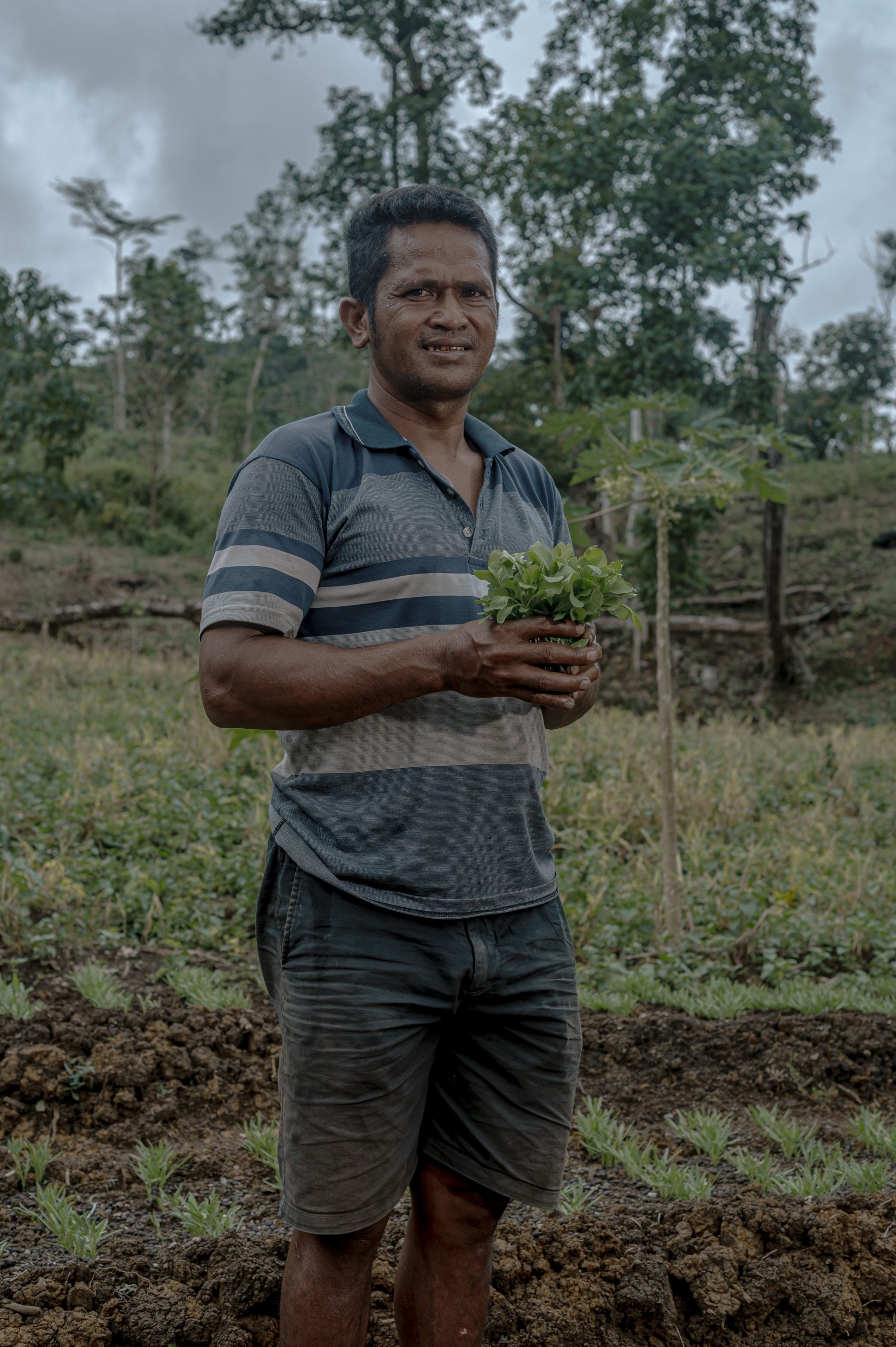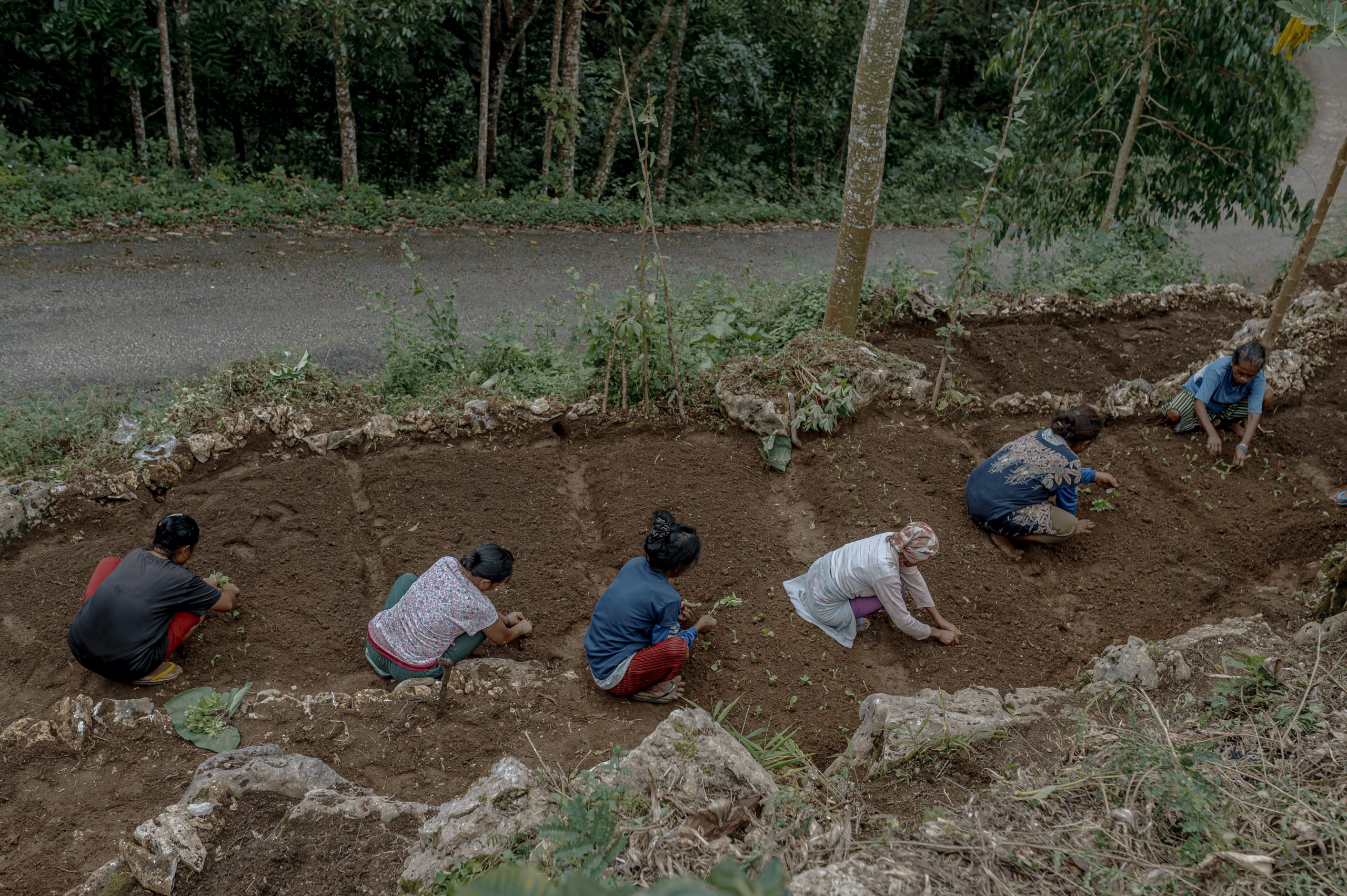
Some women are busy preparing a land in the yard of Agustinus Umbu Pati’s house in Mata Wee Lima Village, Southwest Sumba. Making small beds, loosening the soil, and then placing small water spinach seeds in the soil. Everyone is happy and laughing.
They are farmers and members of the Hidup Bersama Group. The group has 15 members. Most of them are women. While they were resting and enjoying tea or coffee, a vegetable vendor on a motorbike passed by and stopped. A villager bought tempeh and tofu.
Lusiana Winiki also bought tomatoes and chilies. As she walked, she grumbled and joked with other villagers. She said we are not supposed to ever buy veggies again. “But there is nothing we can do. We harvested the tomatoes and chillies a few weeks ago. We have been planting them again,” she said.
Lusiana is Agustinus’s wife. “We have a vegetable garden, still we buy vegetables,” said another who chimed in, greeted with laughter.
The Living Kitchen is how the people in Mata Wee Lima refer to a small garden near their houses. Why living? Because it is directly linked to the kitchen at all times. At night, when we want to eat something, or when it rains heavily and we cannot go anywhere, but need a little coriander leaves, chilies, tomatoes, or spring onions, it is available in only a few steps.
Not only trying to sustain the living kitchen. This group also has its demonstration plot filled with various horticultural crops, such as water spinach, mustard greens, and eggplants. And when it is time to harvest, they will prioritize the group members’ needs, and as agreed, the remaining are sold.
The sales are reinvested, and the remaining goes to the group’s account to be used as mutually agreed. How does this group start, survive, and work together?
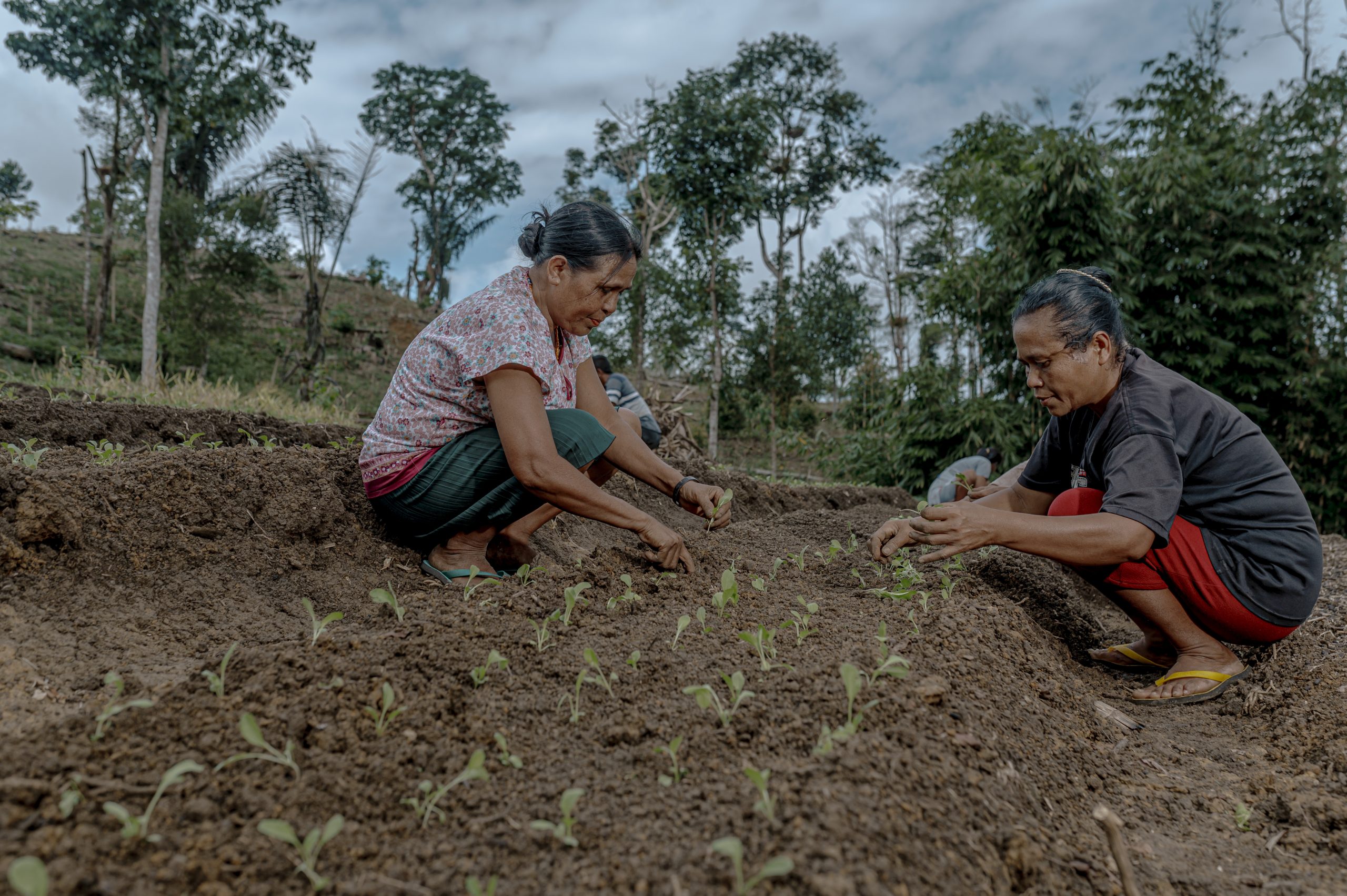
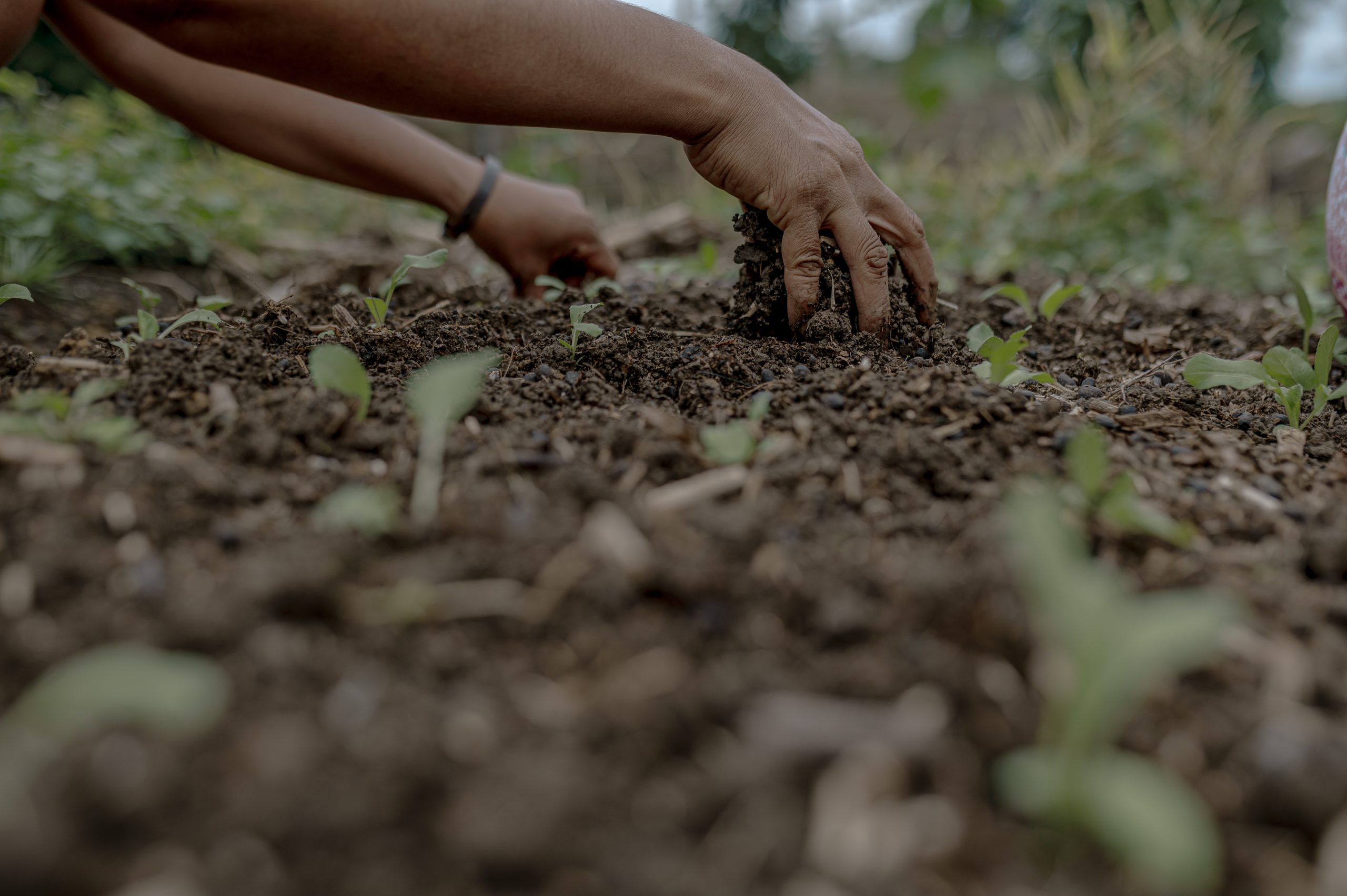
It started in early 2024. BaKTI Foundation, through the Inclusive Rural Community Livelihood Development Program in Eastern Indonesia (BangKIT), visited Mata Wee Lima Village.
Agustinus, who is a member of the Village Representative (BPD), participated in welcoming the team. They discussed and presented the village’s potential. Agustinus was interested. Then the meeting continued.
In Agustinus’s opinion, the village’s potential should be developed and produce. Such an incorrect notion, especially for a money-oriented person like him. Is that really what people need? The villagers were then invited to attend meetings initiated by the village administration and the BangKIT Program.
Many heads and thoughts resulted in diverse inputs. At the end, everyone realizes that a good village development will not succeed if the village administration bears all the ideas.
The villagers do not even know the amount of the budget for each program. It is merely done and agreed upon by the village administration. This practice is certainly wrong, but it can be an excuse because no one understands the planning mechanism well. “After realizing it, we decided to give up the incorrect practice,” said Agustinus.
Agustinus said, the community garden is an example of empowerment based on needs, not desires.
“Yes, of course, the little gardens produce chilies and tomatoes. If they are not for sale, they are for self-consumption. That saves money because we do not spend any,” said Carolina Onci Bulu (42 years old), a member of the group.
“Selling and buying are the same. But, selling and not buying are good,” she continued.
Ester, a member of the group, made a joke. If all villagers had vegetable gardens nearby, there would be no more vegetable vendors coming to the village. “Buying fish or things that can’t be planted is okay,” she said.
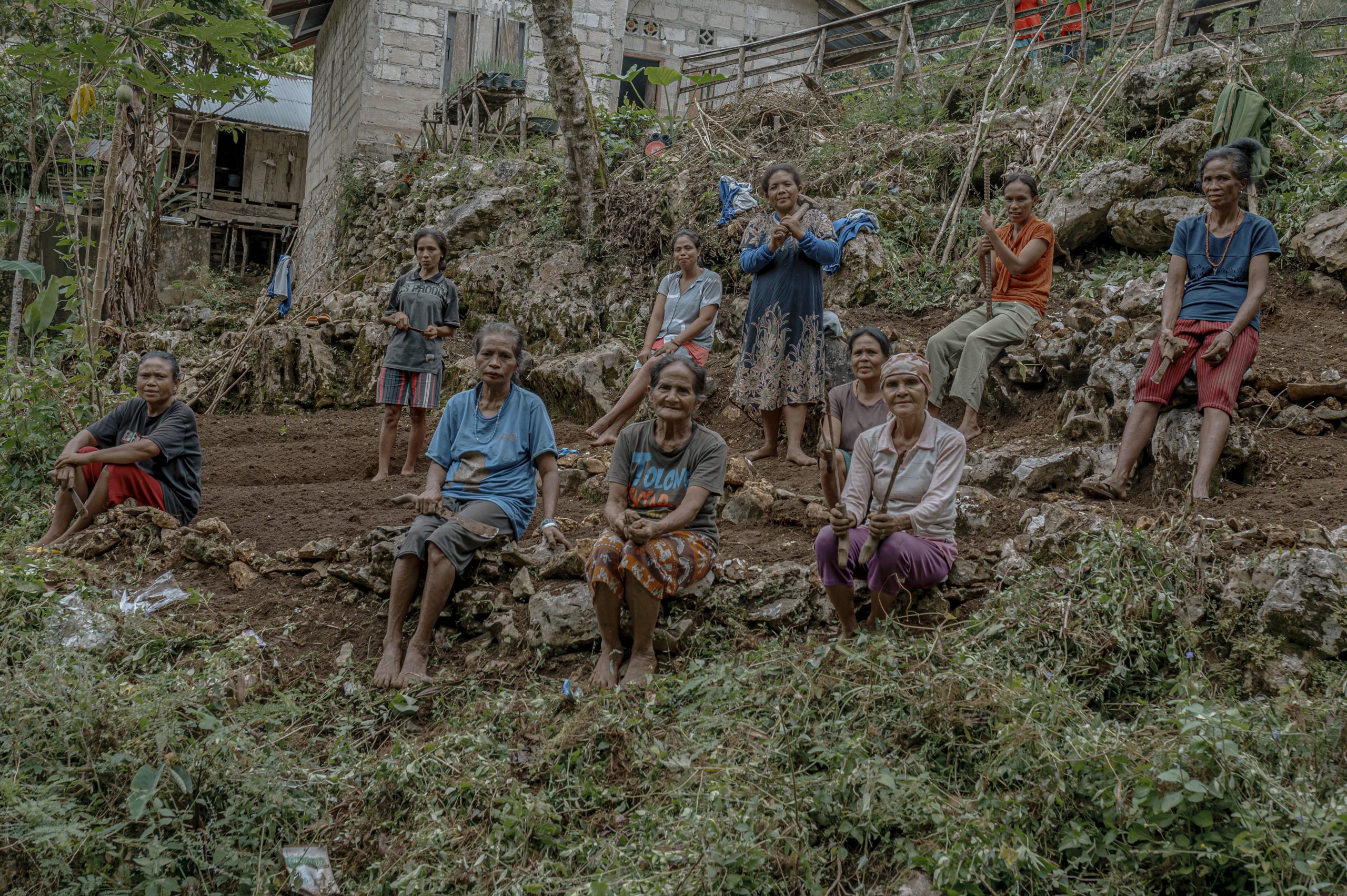
Making Fertilizer
Hidup Bersama Group has been formed. Another support to keep it going is preparing fertilizer for the vegetable garden. In April 2024, BangKIT and the village administration conducted training on organic fertilizer and organic cultivation.
Two months later, the group began to practice. Warna collected the basic ingredients using lamtoro leaves, gamal, takabala, banana stems, and sawdust. The initial ingredients were then finely chopped and mixed with goat manure and charcoal.
The mixture was then tightly covered with a tarpaulin to allow a chemical process to occur from the mixture of various ingredients. After the fermentation process took place successfully, the solid fertilizer was then sprinkled on the cleared land.
Another advantage in Mata Wee Lima, almost all the materials for making fertilizer are not purchased because they are available in the people’s gardens. The goat manure is also easy to get. People who raise goats will provide them for free because the manure will pile up over time and create an unpleasant odor. The owners of the goat farms feel benefited and happy with the existence of this farming group. They do not need to allocate time for cleaning the pen.
This group is now able to produce 350 kg of organic compost fertilizer. The initial capital was 70 thousand rupiahs to buy EM4 and granulated sugar. The group also makes 100 liters of liquid fertilizer with a fermentation method using chili, garlic, lemongrass, and ginger as the basic ingredients.
The total sales from the garden and compost are 3 million rupiahs. The capital was then reinvested in the chicken farming business, which was then stopped as it was considered a failure. The group is using the remaining income for another business, the electricity token business.
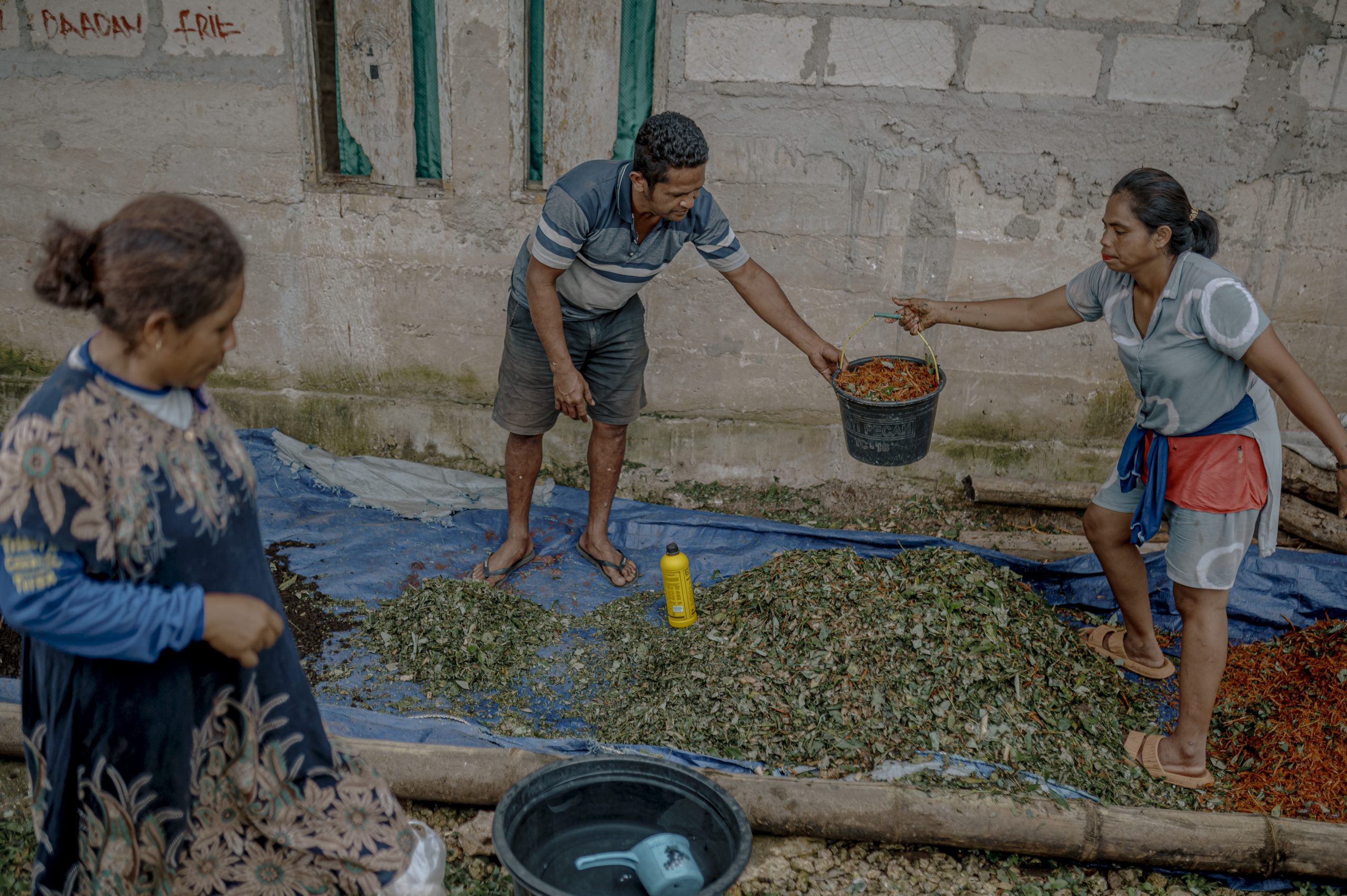
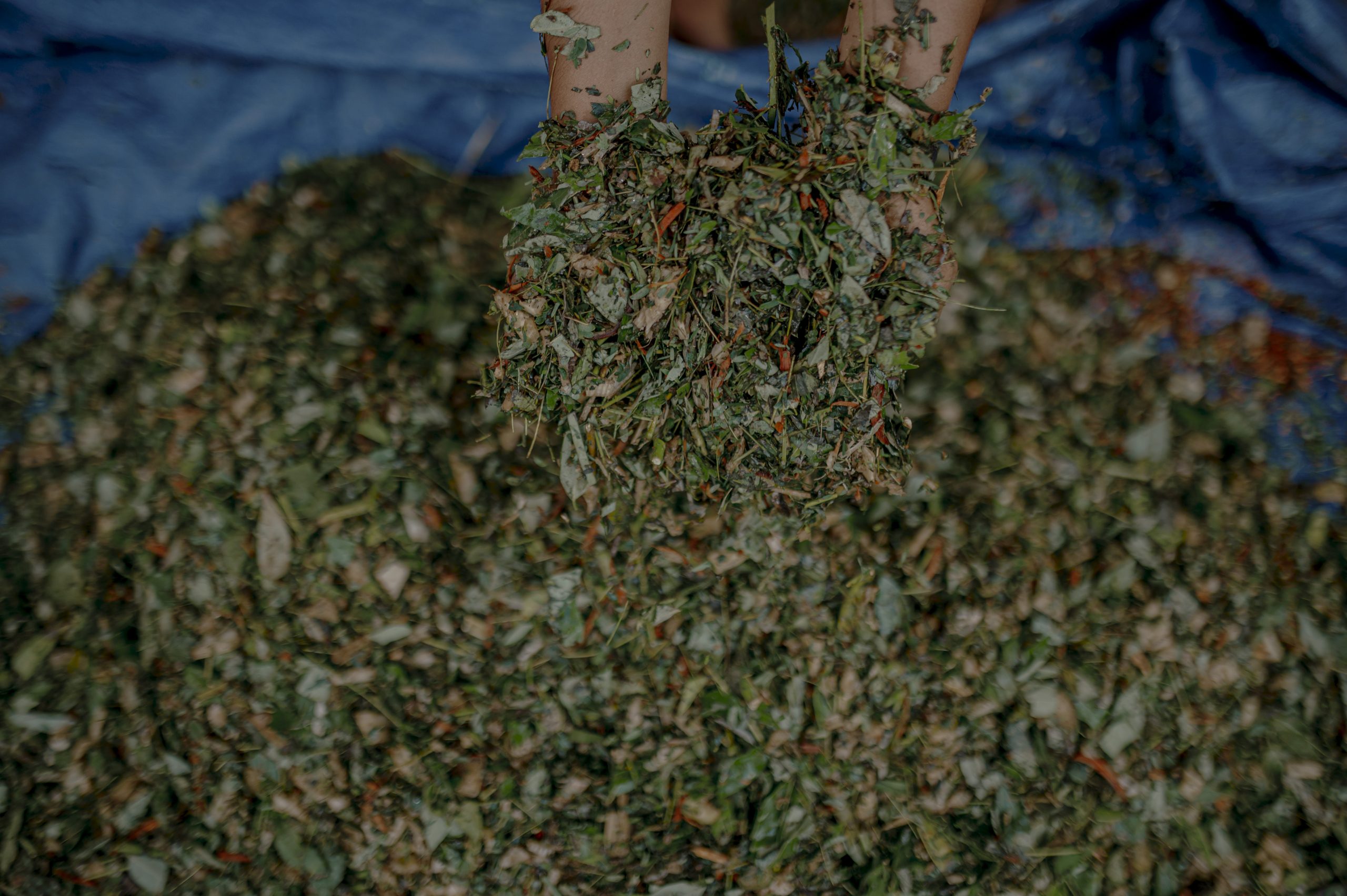
When this fertilizer is used on vegetable plants, they grow better and healthier. The leaves are greener and thicker. “Now, I know which vegetables use chemical fertilizers and pesticides, and which one is natural,” said Ester.
“The taste is very different. It’s hard to tell. But if it’s organic, the vegetables have their specific taste. If it’s chemical, it’s hard for the taste to come out.”
“The elders were living healthy lives, maybe because they didn’t use chemical fertilizers. I understand now.”
Farmers often complain about the cost of fertilizer, which is getting more expensive every year. “With compost, it is cheaper and healthier. All it takes is a little free time,” said Lalimila (61 years old), a member of the group.
The group’s main garden has been harvested, said Agustinus, yet the need for vegetables in the village alone could not be met. Meaning, the people, for all this time, are buying vegetables disregarding the food source, healthy or not, and continue consuming them.
The village administration is now encouraging people to create a Living Kitchen in their houses. Healthy farming movements like this will be replicated so that everyone realizes the significance of healthy food sources. “We don’t have to buy all the food. Everything can be cultivated and planted,” said Agustinus.
